A range of photographs from the Kennet Valley during the Second World War can be found by clicking on the thumbnails below.
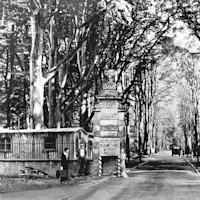
An ammunition storage depot was established in Savernake Forest on July 14, 1940, for conventional and chemical weapons. After the war, the site experienced two major explosions, leading to fatalities and significant damage
28 images
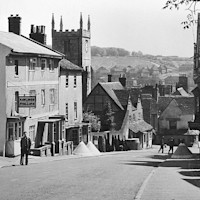
Then And Now: a selection of photographs taken in Marlborough, at Littlecote House Hungerford, and Watership Down near Newbury during WW2 and in 2014
24 images
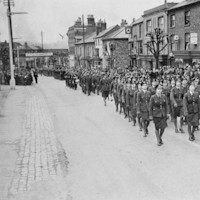
Hungerford during the war, together with a current image of one of the remaining pill-boxes on the Kennet and Avon Canal just outside the town
4 images
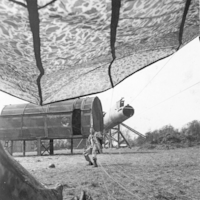
An image of the US parachute training school established at Chilton Foliat, and the Home Guard
4 images
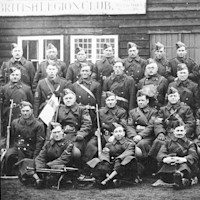
Great Bedwyn Home Guard
3 images
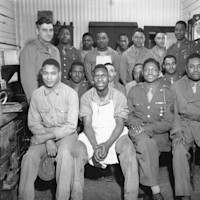
Images of US troops in the Kennet Valley during WW2
26 images
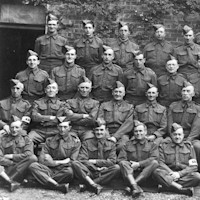
Aldbourne Home Guard
3 images
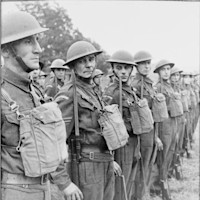
Images of the Home Guard during the war
15 images
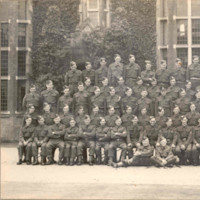
Images of East Woodhay Home Guard
3 images
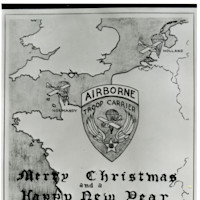
Over 4000 Waco gliders were assembled at Greenham Common ready for D-Day and Operation Market Garden in 1944
34 images
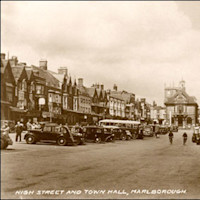
During WW2, Marlborough, Wiltshire, was a significant location, playing host to a large American army hospital and a significant military presence. The town was also a key site for preparations against a potential German invasion, with the local Home Guard and Marlborough College students actively involved in defense efforts. Additionally, Marlborough was a vital part of the transportation network, with the railway station being used to transport troops and supplies
31 images
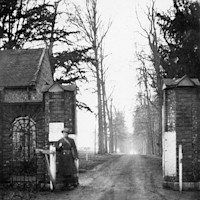
Littlecote House was requisitioned by the Government for use by the military during WW2. In 1942-43 the house was the headquarters of the 34th Army Tank Brigade, 34th Armoured Brigade (United Kingdom) commanded by Brigadier Noel Tetley. In September 1943, the US 101st Airborne Division took over part of the house, and it became home to regimental staff, regimental headquarters company, and headquarters company of the 1st Battalion, 506th Parachute Infantry Regiment. The house provided office space and sleeping quarters for officers of the 506th, with the best rooms being allocated to Col. Robert F. Sink, regimental commander, and Lt. Col. Charles H. Chase, his executive officer. The colonel used the library as his office, and a memorial plaque can be seen today in this room
24 images
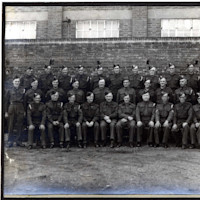
Images of Newbury's Home Guard and Civil Defence units during the war, together with photographs of some of the town's defences
11 images
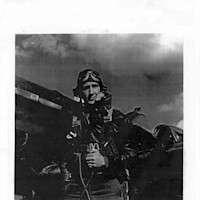
Joe Thompson, a decorated WW2 USAAF pilot, took hundreds of personal photos of ordinary people and the places he saw during the war. He used a Zeiss Ikonta camera and developed the film in his tent at night. He mailed the developed film home and his mother resupplied him with new film regularly. These images represent a small part of his collection
12 images
Newbury was attacked on 10 February 1943 by German bombers, which killed 15 people and injured 41 people. The bombs destroyed a school, a church and houses. A plaque and information board can be seen in the small garden opposite St John's church, which was destroyed during the attack. The Senior Council School, St Bartholomew's Almshouses and Southampton Terrace were also destroyed and another 265 dwellings were damaged. Many were later demolished
14 images
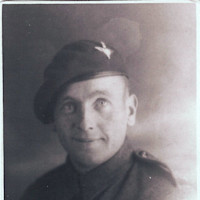
Images of four soldiers who passed through the Kennet Valley (L to R): Private Donald Clifford McArthur volunteered for The Parachute Regiment from the Royal Artillery and served with the Mortar Platoon, 9th Parachute Battalion, and parachuted into Normandy on D Day. He was one of those dropped wide, and was subsequently taken prisoner. Major Joe Thompson USAAF commanded the 67th Reconnaissance Group's 109th Tactical Reconnaissance Squadron. He was a prolific photographer and took some wonderful images whilst in England. Reed Pelfrey, who was the 15th US Pathfinder to parachute out of the first plane over Normandy on D-Day, deployed with the 502nd Parachute Infantry Regiment, 101st Airborne Division. Colonel Michaelis was executive officer of the 502nd Parachute Infantry Regiment, and took command of the unit after the CO, George Van Horn Moseley Jr., broke his leg in the drop into Normandy. Later, Michaelis was severely wounded in the Netherlands. He served as chief of staff of the 101st Airborne Division during the Battle of Bastogne and ended the war as a colonel
4 images
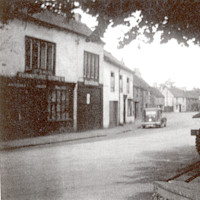
On Sunday, 3rd September 1939, the rural idyll of Ramsbury was shattered when people in towns and villages all over the country heard the news which would change the course of their lives. On that day those near a radio heard the Prime Minister, Neville Chamberlain, solemnly announce that Britain was at war with Germany. It was the start of six years of blackouts, rationing, air-raid warnings, of loved ones being sent away and of the intensifying of community spirit which always seems to develop in times of trouble. The arrival of the Americans was for some the only bright spot in an otherwise miserable war. These images capture life in the village and in the nearby airfield immediately before and during WW2
21 images
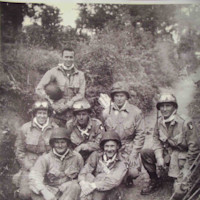
Bill Baird of the 506th PIR made two combat jumps: into Normandy on the eve of D-Day and into Holland for Operation Market Garden. Wounded at Eindhoven, he received the Purple Heart. In Bastogne he earned the Good Conduct Medal and the Bronze Star. These images capture some of his wartime experiences
10 images